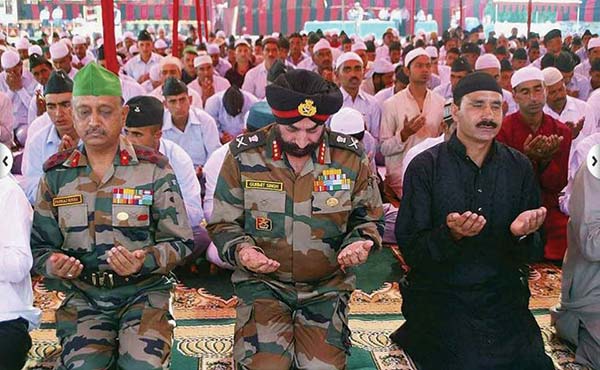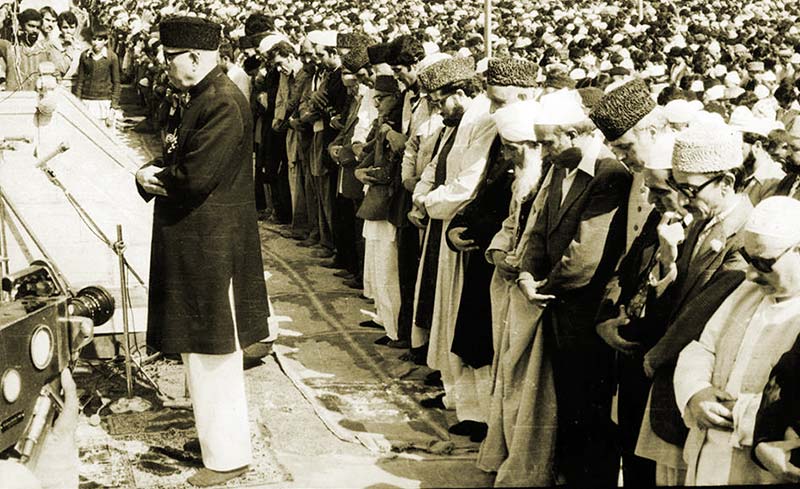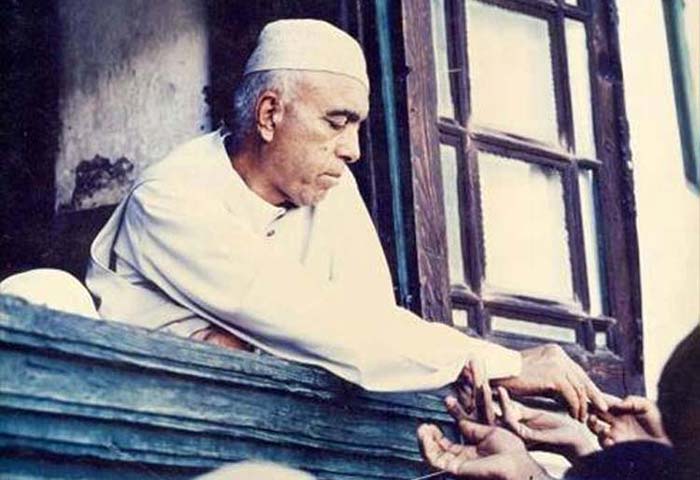Masood Hussain

After formally throwing open a bookstore in Dal lake in May, Chief Minister Ms Mehbooba Mufti made an apparently innocuous comment. “It is a matter of concern,” Ms Mufti said, “the beard of youth is getting longer as their trousers are shortening.”
Significance of these comments was felt by some of the TV reporters who requested her to repeat the same in any non-Kashmiri language. This, they said, was vital to communicate her concern to the larger audience. She cleverly heard them, smiled but did not oblige.
I have no problems in the veracity of her statement even though I see it befitting the young women dress more than males. My issue is different: why should J&K’s any Chief Executive get involved with the length of beards when there are much bigger issues to tackle first? As head of a secular state, Ms Mufti is ruling India’s most sensitive state with rightwing BJP as an ally and still thinks she must feel “concerned” in matters of faith!
Her statement, however, conveyed the “crisis” that various government’s across the world, the most recent being India and Pakistan, are confronted with: increased Saudi influence in the region. Routinely being dubbed as Wahabism, lot many strategic affairs experts believe that so called Wahabization of Islam has increased Islam’s ‘violent outlook’.
I am not a Wahabi but I do not believe even in a shred of this argument. The movement led by Mohammad ibn Abd-al-Wahhab is mostly about reducing gate-keeping between the Creator and the mankind. It is more about invoking text and delinking culture from pure faith. This fierce de-linkage between the faith and the cultural history continues to be at display in the ongoing process of creating ‘Modern Mecca’. It has hurt millions of Muslims like me but it still is far away from the silver lining where one could pass a judgment against Kabba custodians.
Wahabism may have some relevance to the happenings in Syria or other burning spots on the globe but Kashmir is completely a different space. Wahabis in Kashmir are more peaceful than any other sub-school of thought. Any change in Kashmir’s religious character, however, must be seen more in its historic context rather than picking up contemporary cosmopolitan trends to explain it.

Islam in Kashmir has existed, for a very long period, in the classist bourgeoisie greenhouses with no direct access to commoners – the typical mal-nourished, ignorant proletariat. After getting de-controlled from the clergy, mostly in the last fifty years, Islam in Kashmir is shedding the cultural superimpositions to get closer to the text. This is the larger reality. It has nothing much to do with the Saudi influence overtaking the Persian past with Peashan and Khuftan prayers becoming Asar and Isha prayers.
This ongoing process might undo many small occupations, demolish many “green-houses” and “windows” of opportunity and may even upset the social stratification in coming years. But there is nobody in a position to undo it or even change its course. Not even the secular government or the filthy rich clergy.
I see these happenings beyond the investments that Tehran and Riyadh might be making in rest of the Muslim world to fight their wars of supremacy and one-upmanship, offshore. This is part of their foreign policy. Though Kashmir is far away from those battlegrounds, I admit, the tensions exist.
My argumentation has nothing to do with the scores of mosques cropping up in Kashmir, every season, indicating rising Saudi influence in the traditional Pir Vaer. I see lengths in beards and trousers indicators of self discovery rather than a diversion from basics.
But State has never forgotten the faith. For a very long time, state systems have tried jumping directly into the pulpit or encouraged “supportive” clergy. Even the worst rulers in Sikh and Dogra era would fund the kitchens, Hamams and Harems’ of the clergy to keep subjects ‘disciplined’. Now only the processes have changed and not the systems.
One instance I am personally aware of is that army and other security agencies organize Iftaar parties and apparently to convey “respect” for Islam, they offer Nimaaz in full media glare. The last time when I saw it happening was in SKICC where the then corps commander Lt Gen V G Patankar had invited media for the Iftaar Milan. I was done with my abulations and was waiting for the prayers to begin that I saw Patankar in snow white Khan Dress wearing a Karakul cap with the drops of water dripping down his face. I was surprised.
When my colleague told me that he was going to offer Nimaaz with us, I was shocked. I came out of the line, sat in the lawns, lit a cigarette and watched the tamasha of multi-faith Nimaaz. It might have been one rare Iftar in my lifetime that used gas and not liquid or solid. Muslim prayers are commanded for the faithful and any neutralization of that makes it a theatre.
I have rarely joined such Milans later. But I was told that this is a regular practice for top Generals to join the symbolic Nimaaz. Even former Chief Minister Omar Abdullah was part of one such fully televised Nimaaz. For all these years, nobody from the government or the clergy is suggesting soldiers to avoid this aberration as the respect lies in not having it.

Soldiers have evolved their own style of “respect”. On April 5, 2005, two days ahead of the historic reopening of the Jhelum Valley Road, army drove the Srinagar media corps to Aman Setu, to showcase how 6-Engineers created a wonderful 220-ft bridge that connected the two slices of Kashmir. The entire highway was decorated by the billboards as army and Srinagar government joined hands to get the best slogans inscribed around.
The first signboard Kashmir wanted the PaK visitors to see was a reminder of what Sheikh Mohammed Iqbal, the Kashmiri origin, national poet of Pakistan, sung for pre-partition India: “Mazhab Nahi Sikhata Aapas Mein Bair Rakhna” (Religion does not teach hatred).
As visitors would march a few feet ahead into J&K, they would feel blessed by a ‘shrine’ just on the elevation facing the Kaman Post’s Kashmir gate. This Greenfield shrine surprised me. It was a concrete-epitaphed grave draped in green with flower petals showered over it. I went to Col G S Rawat of the Dogra Regiment who was overseeing things: “Who lays buried in this grave?”
“Nobody, it is empty,” colonel said in a terse, curt tone. “It is empty but it shows our respect to the great saint Rangi Baba who lies buried in Qazinag.” I laughed at the “outpost of respect”.
Kashmir is not unaware that managing different facets of its faith are a state project. Within and outside the clergy, there are lot many people keen to go an extra-mile in helping the system “contain” the external influences on “local” Islam. This is more of a scandal and the only outcome of all this is some rehabilitation to some people for some time. Let me be very honest in saying this that these series of projects run by local officials turned god-men and those handling it from UP and North Block have not changed even an iota on ground. They have only added to the costs of the system they work for as stakeholders have multiplied.
For me, faith should not be the subject of the secular state. Elected directly by the people, governments are purely instruments of governance. They should restrict themselves to that only and avoid becoming Kashmir’s new “faith-healers”.
A Chief Minister cannot be the Chief Muslim Priest at the same time. Sheikh Abdullah tried and failed. This was despite the fact that he created a parallel religious platform to push his political agenda forward. But if the government genuinely wishes to contribute adequately in matters of faith, it has a huge potential without compromising its secular basics.
One way of pre-empting the offshore influence on the “local” Islam is to undo the aberrations that have been encouraged by the systems over the years. For a start, why the government cannot stop investing in the mosques on the simple plea that no government fund is halal for a mosque? State kitty has contributions from diverse resources including pure interest and levy of a series of taxes on liquor. Lot of mosques were constructed, repaired and renovated by the government under various tourism and heritage schemes in last many decades. If the faithful lack the capacity to contribute for creating a better prayer space, it should not be a state government headache. There has been a lot of criticism to such flawed public spending process in past but no government gave it a serious thought.
By the way why should not government act and prevent setting up of mosques on state land. A prayer in any mosque that is constructed on encroached space including government land (which is not paid for), usually termed as Maqbooza Ahli Islam, is not allowed in Islam.
Why cannot government encourage the professionals – as in case of non-Muslim Trusts and NGOs, to takeover and manage the Muslim properties in Kashmir and Jammu? Why shouldn’t the government manage the Muslim Wakf’s as it does with the Sikh Gurdwara Prabandhak Committee by holding an election for its office bearers for a definite time frame? Muslim Trusts in J&K are the worst victims of mis-governance and mis-management.
The second way-out for government is to invoke culture and history to manage areas where faith comes in between. Most of the load that Kashmir has added to the puritanical Islam is its cultural continuity with its distant Hindu past – people started worshipping graves once the new faith stopped them from idol-worship.
If the government has to take its Project Faith seriously, then it will have to review the strategy. Most of the shrines, for instance, have more cultural or historical significance than that of faith. The government can invest massively and make a grand contribution if it takes that route.
The society has resisted a white-paint of a shrine by 15-corps under its open ended Operation Sadhabavana. But if the government reconstructs shrines, as it has done at many places, and take the historic and cultural route, nobody will have any objection, even a millennium later.
Kashmir is a tricky, unpredictable place that has exhibited massive outpour of emotion and sentiment every time, a sensitive situation emerges. While systems and process have changed across Kashmir in last one century, a commoner has sustained his faith undiluted. He reacted to a situation almost in the same fashion in 1931 as he did to Salman Rushdie’s Satanic Verses in 1989. So the systems should respect a commoner’s self-discovery and retrospection of his religious processes and practices. This could help Kashmir’s political masters immensely in encouraging logic and science, a tool that might come handy for them to manage bigger issues later.
Most of the politicians have their Pirs and Gurus. I am aware of some Muslim politicians having Tantriks as Gurus. I know Pirs living literally in cowsheds but retaining their right as spiritual leaders of various political beings. These characters might be great in their own right but Islam being the way of life with emphasis on purity and cleanliness may never accommodate them. These are superstitious traditions rooted in cultural past and may not necessarily be thrust upon faith.
Kindly understand these basics before creating new ‘faith accompli’.
















The writer doesn’t even properly know the name of the personality he claims to be the founder of wahabism! I’m sure he wont be able to define wahabisms if he asked to. Never the less he seems to be suffering from his figment of his imagination like many others and he is not alone, the PM of India gives him company here when he suggested that Sufism is the only true representation of Islam at the inaugural ceremony of a Barelwi conference in New Delhi. Very poorly informed writer. He seems to be making a dangerous preposition when he suggests that Saudi’s have an influence over Muslims in the sub Continent as if the Saudi’s have no other preoccupation? Yes but surely all the socio-cultural and religious developments taking place in Kashmir have all the hallmarks of state sponsored aggression. A confused mass of protoplasm
Excellent write up.
Quran and Sunah can and should be studied without mediators especially those who have exploited the community.
People are gradually realizing that the self styled scholars who beckon common man in order to purify illegally earned money their hypocritcal life cannot help them.
Their are so many dawah talks out there on youtube for everyone to connect with the true faith like Yasir Qadhi, Yasmin Mogadeh, Noaman Ali Khan, Zakir Naik etc and they are not Saudi funded Wahabis.instropection…..
However the overt and strange love of central govt and state govt for Sufi and Bareilvi practices should be an eye opener if nothing else is.
U even don’t know the name of the person, who founded so called wahabism. See if you don’t know anything, then please shut up, don’t speak out of your ignorance.
Think of the society where PDP backed and promoted journalists try to be custodians of faith. I am sure this guy knows nothing about faith………let alone Wahabism. He is part of a communal govt led by a RSS backed lady.
I am genuinely pleased to glance at this website posts which includes plenty of useful facts, thanks for providing these kinds of statistics.